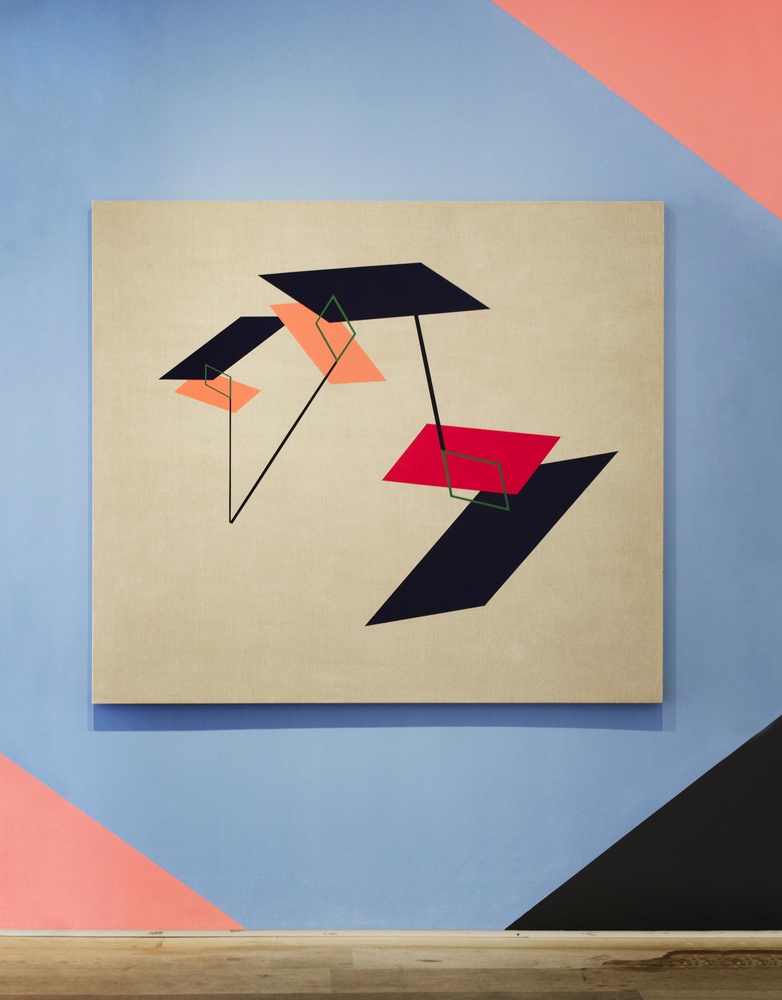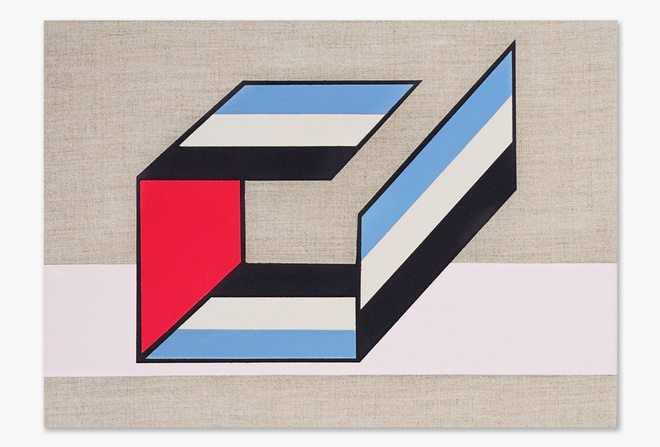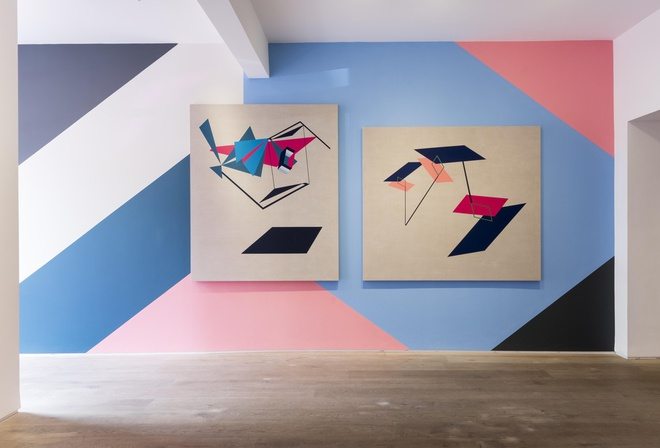Known for her dramatic artworks awash with vibrant colours, the British artist of Balinese descent, Sinta Tantra is probably most well known for waging war on the nondescript grey skylines of cities and infusing meaning through the semiotics of colour. Elephant caught up with the artist as her recent exhibition, Chromatic/Fantastic came to a close at London’s Kristin Hjellegjerde Gallery.
If colour is a language, what was Fantastic/Chromatic trying to communicate?
I’m interested in the semiotics of colour – the complex nature of how we communicate through colour and how these associations reflect our own identities, tapping into our unconsiousness. I often combine ‘tropical’ and pop colours with an English Heritage palette. My work plays with both colour harmony and tensions within it.
The exhibition was awash with fandango pinks and powder blues. What effect did you intend them to have upon an unsuspecting visitor?
In the past I was interested in exploring the colour pink – the way people responded when immersed in the colour, the gender politics raised and its cultural associations. You could say that the colours in this recent exhibition have a more ‘cool’ palette than earlier works. I wanted to create a back-and-forth tension between the hot pinks and cool blues, the masculine and feminine, the exotic and the familiar.
What draws you to creating art within the public realm? Do you feel your work relates best in a larger urban context?
Even at art school, painting on canvas didn’t really appeal to me — I was more interested in playing with an architectural space, injecting colour, line and form into new environments. Admittedly in the early days, there was also the desire to challenge the gender stereotype, that both men and women could make large scale works. Each commission brings with it an intimate and unique insight into both location and culture. There’s a sort of ‘constructivist’ approach to the entire process which I like too — there are the practicalities of making the work itself whilst giving the artwork a ‘social function’.
The position of the sun dictates how some of your work is perceived. When did effects of natural light begin to take on such an integral role within your practice?
I started thinking about the natural light a few years ago when I began using coloured glass in my sculptures. Sunlight would pass through the glass creating pools of coloured light both onto the floor as well as onto the bodies of people passing through, making the work very interactive, constantly transforming and moving with the sun. I like incorporating the dimension of time into a solid material such as glass as well as the concept of the artwork itself.
What can Londoners learn from living in Bali?
Life goes at a somewhat slower pace in Bali, people smile more, laugh more and rarely allow ‘work’ to take over their lives as they do in London. For most Balinese, daily life centres around social activities concerning religion, family and the village you come from. I’m fascinated in the way Balinese people come together, make things together, construct things together — usually all for religious purposes — and it’s all done in such an effortless way. There’s a genuine sense of community which I think larger cities such as London have unfortunately lost. If you have ever been to Bali, something magical happens to the light on that side of the equator, colours appear more vibrant, your visual sense is heightened. A lot of the inspiration of my work comes both from the natural landscape as well as the colourful Balinese ceremonies often involving intricate arrangements of food, flowers and incense.
Sinta Tantra is represented by Kristin Hjellegjerde










